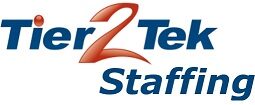In the rapidly evolving world of technology, business owners face the critical decision of how best to support their IT needs. Two prevalent models offer distinct approaches: IT staff augmentation and managed services. Each has its advantages and caters to different business requirements, making the choice between them pivotal for operational efficiency and growth.
Understanding IT Staff Augmentation
IT staff augmentation serves as a strategic approach for businesses looking to dynamically scale their technology teams in response to project demands or technological advancements. This model allows companies to add specific skill sets to their existing teams on a short-term or project basis, providing the agility to address immediate IT challenges without the long-term commitments associated with hiring full-time staff. Particularly useful for projects requiring niche skills or additional manpower, staff augmentation enables businesses to maintain a lean core team while leveraging external expertise as needed.
- Flexibility and Scalability: Enables rapid scaling of IT capabilities to meet project demands or explore new technologies without permanent overhead.
- Skill-Specific Hiring: Offers access to a global talent pool, allowing companies to fill specific skill gaps or secure expertise for unique projects.
- Cost Efficiency: Reduces the need for long-term employment contracts, offering a financially viable option for short-term or project-based needs.
- Direct Oversight: Augmented staff work under the company’s direct management, ensuring alignment with project goals and company culture.
Exploring Managed Services
Managed services present a comprehensive solution for businesses aiming to delegate their IT operations wholly or partially. This model encompasses a wide array of services, from day-to-day IT management and cybersecurity to cloud computing and support services, offering businesses a way to outsource complex IT tasks. By partnering with a managed services provider (MSP), companies can tap into a wealth of expertise and technologies, streamlining their operations and focusing on their core business activities without the burden of managing IT in-house.
- Predictable Costs: Managed services typically operate under a fixed monthly fee, providing budget predictability and often resulting in long-term cost savings.
- Access to Expertise: MSPs offer a team of experts across various IT domains, ensuring all aspects of IT operations are managed professionally.
- Focus on Core Business: Outsourcing IT management frees up internal resources, allowing businesses to focus on strategic growth and core competencies.
- Enhanced Security and Compliance: MSPs often bring advanced security measures and compliance expertise, reducing the risk of data breaches and regulatory penalties.
Cost Considerations
When it comes to cost considerations, IT staff augmentation and managed services offer distinct financial implications that businesses must evaluate. Staff augmentation allows for direct control over the extent and duration of external hiring, making it a cost-effective solution for short-term or specific project needs. This model enables companies to avoid the fixed costs associated with permanent hires, such as benefits and long-term salaries, while still accessing the necessary skills and expertise on demand.
- Direct Control Over Expenses: Offers the ability to manage project costs closely, adjusting the size and composition of the augmented team as needed.
- Avoidance of Long-Term Costs: Eliminates the financial commitments associated with full-time employees, including salaries, benefits, and training.
- Financial Flexibility: Provides the agility to allocate resources to other strategic areas as project demands fluctuate.
- Tailored Solutions: Enables businesses to seek out specific expertise for the duration of a project, avoiding the expense of underutilized full-time roles.
Flexibility and Control

Flexibility and control are crucial benefits of IT staff augmentation, allowing businesses to respond swiftly to changing market demands and technological trends. This model grants companies the agility to adjust their IT workforce in alignment with project timelines, technological needs, and budgetary constraints. Direct oversight of augmented staff ensures their integration into company culture and alignment with project objectives, offering a seamless extension of the in-house team.
- Rapid Adaptation to Change: Enables businesses to quickly adapt to market changes, technological advancements, or fluctuating project scopes.
- Direct Management and Integration: Augmented staff are managed directly by the company, facilitating seamless integration with existing teams and projects.
- Alignment with Business Objectives: Ensures that all augmented staff work in sync with the company’s strategic goals and project requirements.
- Customized Team Composition: Allows for the precise tailoring of the team’s skill set to the project at hand, ensuring optimal performance and outcomes.
Expertise and Specialization
The access to expertise and specialization is a significant advantage of IT staff augmentation. This model enables companies to precisely match their project requirements with the skills of IT professionals worldwide. Whether the need is for a niche technology skill set or industry-specific experience, staff augmentation allows for a targeted approach to hiring. This flexibility ensures that businesses can rapidly onboard experts for the duration of a project, avoiding the time and cost associated with developing these skills in-house.
- Access to Global Talent: Expands the recruitment pool beyond local candidates, allowing businesses to benefit from global expertise.
- Project-Specific Skills: Facilitates the hiring of professionals with the exact skill set needed for a project, ensuring high-quality outcomes.
- Quick Onboarding: Reduces the lead time to kick off projects, as augmented staff can be rapidly onboarded and aligned with project goals.
- Cost-Effective Expertise: Enables companies to leverage specialized skills on a project basis without committing to long-term employment costs.
Risk Management and Compliance
Managed services shine in their ability to manage risk and ensure compliance across IT operations. With the growing complexity of cybersecurity threats and the stringent regulatory landscape, partnering with an MSP can significantly mitigate these challenges. MSPs typically invest in high-level security protocols, continuous monitoring, and compliance expertise that many businesses would find prohibitive to develop and maintain in-house. This comprehensive approach not only secures IT operations but also aligns them with industry standards and legal requirements, providing peace of mind and freeing up internal resources.
- Advanced Security Measures: MSPs implement and maintain robust security infrastructures to protect against evolving cyber threats.
- Continuous Compliance: Ensures businesses meet regulatory requirements with ongoing compliance management, reducing the risk of penalties.
- Proactive Risk Management: Identifies and mitigates IT risks before they impact business operations, leveraging advanced monitoring tools and expertise.
- Resource Allocation: Allows businesses to reallocate resources from IT risk management to core activities, optimizing operational efficiency.
Scalability and Long-Term Growth
Both IT staff augmentation and managed services play crucial roles in supporting scalability and fostering long-term growth, albeit through different approaches. Staff augmentation offers the agility necessary for businesses to scale their IT workforce in alignment with project demands and growth phases, making it an ideal solution for periods of rapid expansion or when exploring new markets. This model supports short-term growth strategies by providing access to specialized talent as needed, without the overhead of permanent hires.
- Agile Workforce Scaling: Adjusts the size and skill set of the IT team in real time, aligning with evolving business needs.
- Support for Innovation: Enables companies to pursue innovative projects and enter new markets by providing the requisite expertise on demand.
- Flexibility in Growth Phases: Supports businesses through various growth stages, offering staffing solutions that can adapt to changing needs.
Managed services, on the other hand, offer a strategic partnership that supports sustained growth by ensuring that IT operations can scale with the business. This model provides a foundation for long-term success by leveraging the MSP’s expertise to optimize IT processes, implement best practices, and introduce innovations that drive efficiency and competitiveness. By entrusting IT operations to an MSP, businesses can focus on strategic growth initiatives, knowing their IT infrastructure is robust, scalable, and aligned with their long-term vision.
- Strategic IT Planning: MSPs work with businesses to develop IT strategies that support long-term objectives and growth.
- Operational Efficiency: Enhances business operations through the optimization of IT processes and the implementation of best practices.
- Innovation and Competitiveness: Introduces technological innovations that can improve efficiency, reduce costs, and enhance competitive advantage.
- Focus on Core Business: Frees business leaders to concentrate on strategic growth areas by relieving them of the burden of IT management.
Whether through the targeted, flexible approach of IT staff augmentation or the comprehensive, strategic partnership of managed services, businesses have powerful models at their disposal to support their IT needs. Each offers distinct advantages in expertise access, cost management, risk mitigation, and scalability, making the choice between them dependent on the specific needs, strategic goals, and growth trajectory of the business.
